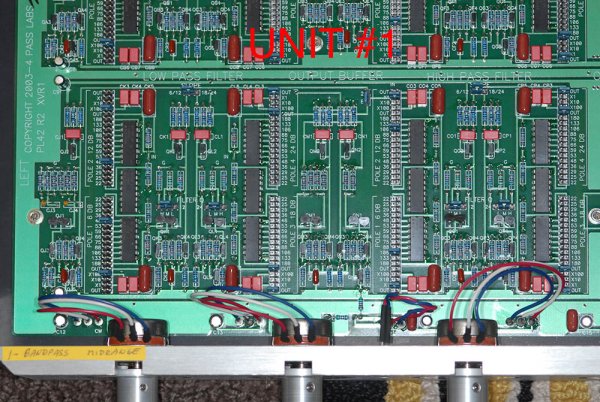Gentlemen, I thought I might start a thread on an area I have zero experience/confidence of
That is using an external crossover, specifically active, like the Pass Labs XRV1 or First Watt B4
I'm asking this as I research possible upgrade from my Zus to restored Graz Apogee Divas
These can be set up
1-single amp/passive crossover
2-biamping/passive crossover
3-biamping/active crossover
This last option involves preamp to active x/o, which sends adjusted signal to bass amp, and another adjusted signal to second amp which then drives an Apogee filter which sends separate signals to mid and tweeter
I like the idea of active bi amping, because especially with Apogees and my tube amps, it will boost efficiency a few dB's, but I've looked at the Pass crossover setup instructions, and it's 30+ pages of sheer impenetrability
This is all s little ironic because a major Zu USP is its lack of traditional crossover, relying on a couple of Duelund caps/resistors to low and high pass filtets
That is using an external crossover, specifically active, like the Pass Labs XRV1 or First Watt B4
I'm asking this as I research possible upgrade from my Zus to restored Graz Apogee Divas
These can be set up
1-single amp/passive crossover
2-biamping/passive crossover
3-biamping/active crossover
This last option involves preamp to active x/o, which sends adjusted signal to bass amp, and another adjusted signal to second amp which then drives an Apogee filter which sends separate signals to mid and tweeter
I like the idea of active bi amping, because especially with Apogees and my tube amps, it will boost efficiency a few dB's, but I've looked at the Pass crossover setup instructions, and it's 30+ pages of sheer impenetrability
This is all s little ironic because a major Zu USP is its lack of traditional crossover, relying on a couple of Duelund caps/resistors to low and high pass filtets




















